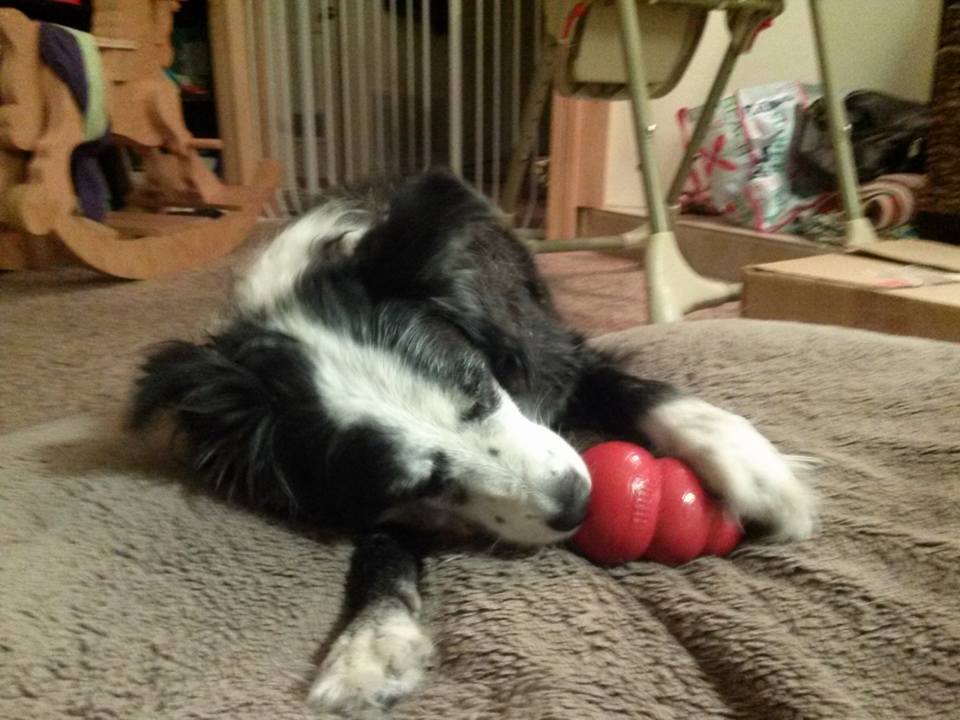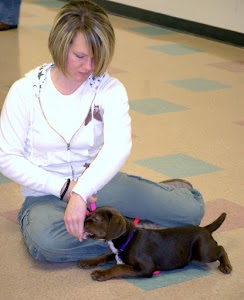Many of our Salt Lake City dog training clients want to train their dogs to be calm when visitors come to the front door. This can be a challenging behavior to train. My dog Seiki is awesome going to his place when people come to the door and yet there are still times that he still barks. With the amount of training we have done why would he still bark and what do I need to do differently to create more success and obedience? I have spelled out a new training plan that I am going to perform with Seiki. I want this to inspire you so that you can create ultimate success with having your dog be calm at the door.
First of all there are many stimuli that are triggering the barking to happen with your dog at the front door. He may get triggered by many or all of the following:
- the noise of people talking outside the front door.
- the noise of people walking by the front door.
- the sound of door knocking.
- the sound of the doorbell ringing.
- the door opening and knowing that someone is outside the door.
- seeing the person standing outside of the door.
- the visitor walking into the house.
- the visitor talking to you as you open the door.
To create the greatest dog training success, you need to create your dog to feel more comfortable and relaxed with each trigger. Work with each trigger individually in a the lowest intensity possible. With Seiki, I need to break down each trigger and work with each scenario at a low intensity. For example, I can focus on just the door knocking. The door knock can predict that special yummy treats will fall from the sky. It is important that the door knock happens before the treats start so that the knock predicts the treats. At first, I want to start with quiet door knocks at a variety of times of day, and I need to be standing right by the front door. The treats can be visible at first. Eventually, I need to start having the treats in a drawer or in a place that is not visible. Once he is more calm with just the quiet door knock I then need generalize the calm behavior when I am standing in a variety of places in the apartment and a quiet door knock occurs. At first, I just start few feet away from the door. Then I gradually move farther and farther away from the door. After that, I will be standing in random areas of the house when the door knock occurs. When I want to work on louder door knocks, I will repeat the whole process above with the louder door knocks.
How can I create frequent door knocking so that I have enough training practice scenarios for Seiki to learn obedience?
- I can enroll my neighbors to help me with door knocking. At first, I will want to be ready to do the training when the knock occurs. So I will text or call them to set up a predictable time for me.
- Have a sign on the door when visitors come over. This sign will say to text or call me rather than immediately knocking. I can then instruct them to knock when I am ready to train.
- Record a sound of a door knock.
- My roommate and I can also knock before I walk into my apartment.
In the beginning, I need to have the door knock predict treats 100% of the time. Eventually, I can shift to random rewards.
So for me the changes entail using a special treat that is paired with the door knock and creating more practice time with the above scenarios so that Seiki can adequately have the time to learn a new behavior. When I am training only when visitors are coming to the door I am having too many triggers happen all at once. If I break the triggers down and spend training sessions with working individually with each trigger until I have success, I will create more calmness and obedience at the door with Seiki.
Your Turn! We want to hear from you in a comment below!
What have you learned about creating success with obedience and calm behavior at the front door? How can you lower the intensity of the triggers and work on them individually with your dog to create Salt Lake City dog training success?
Namaste!
Johanna Teresi, Professional Trainer and Owner of Four Legged Scholars LLC, Dog Training, Salt Lake City






















0 Comments